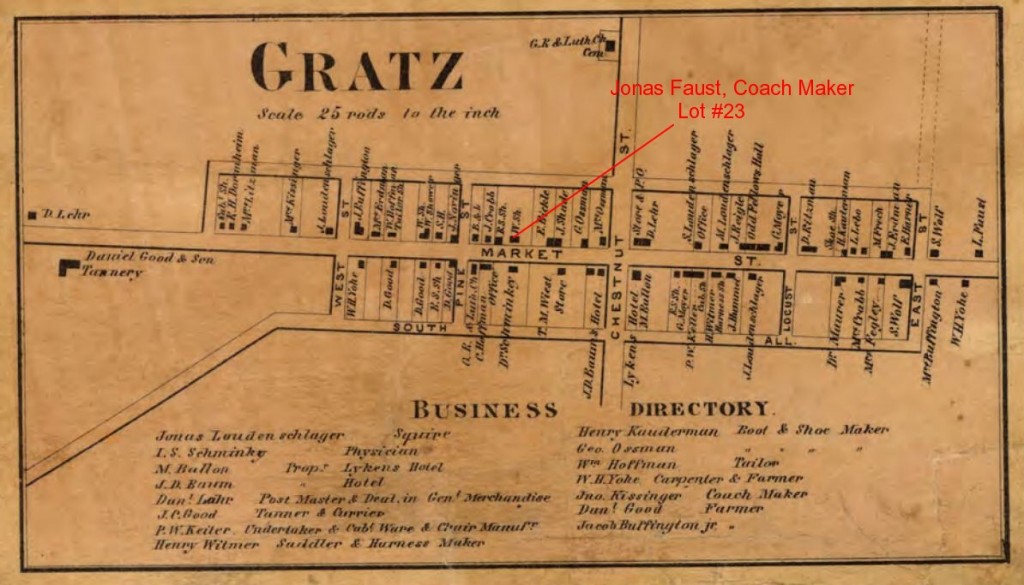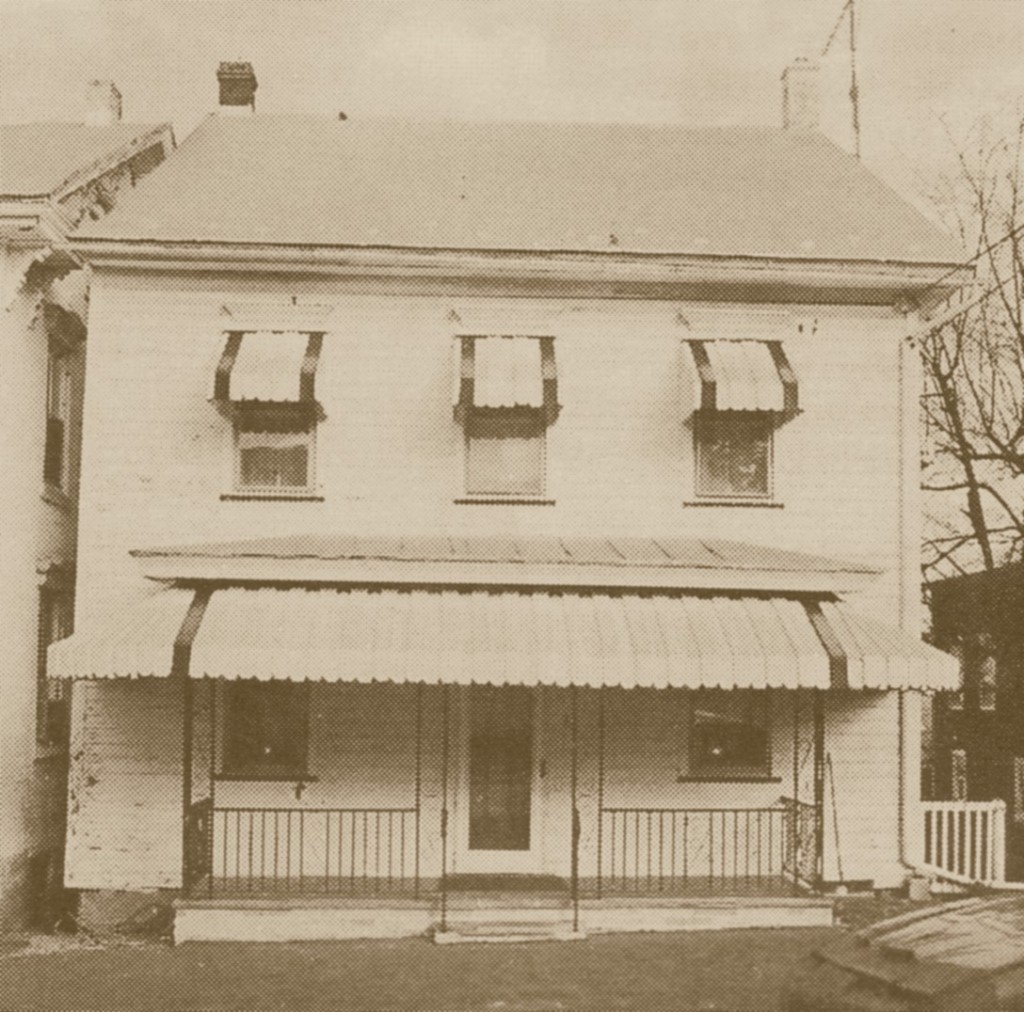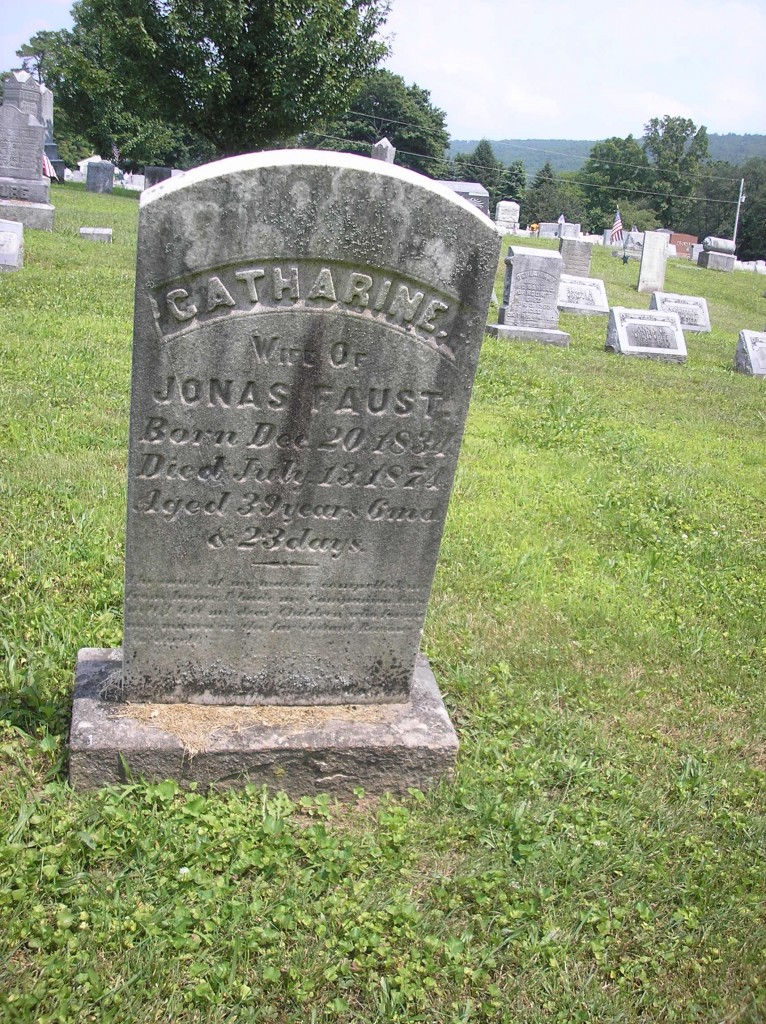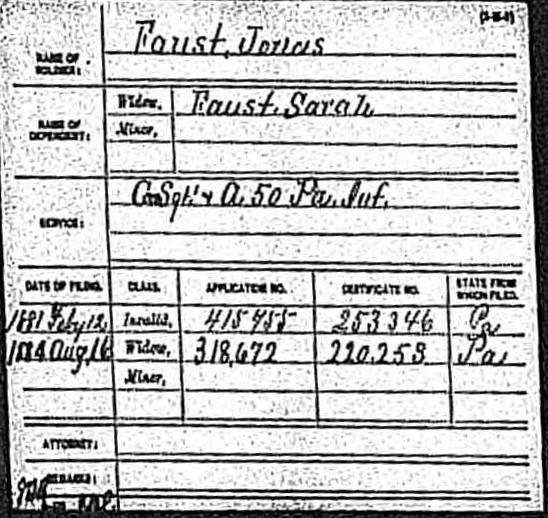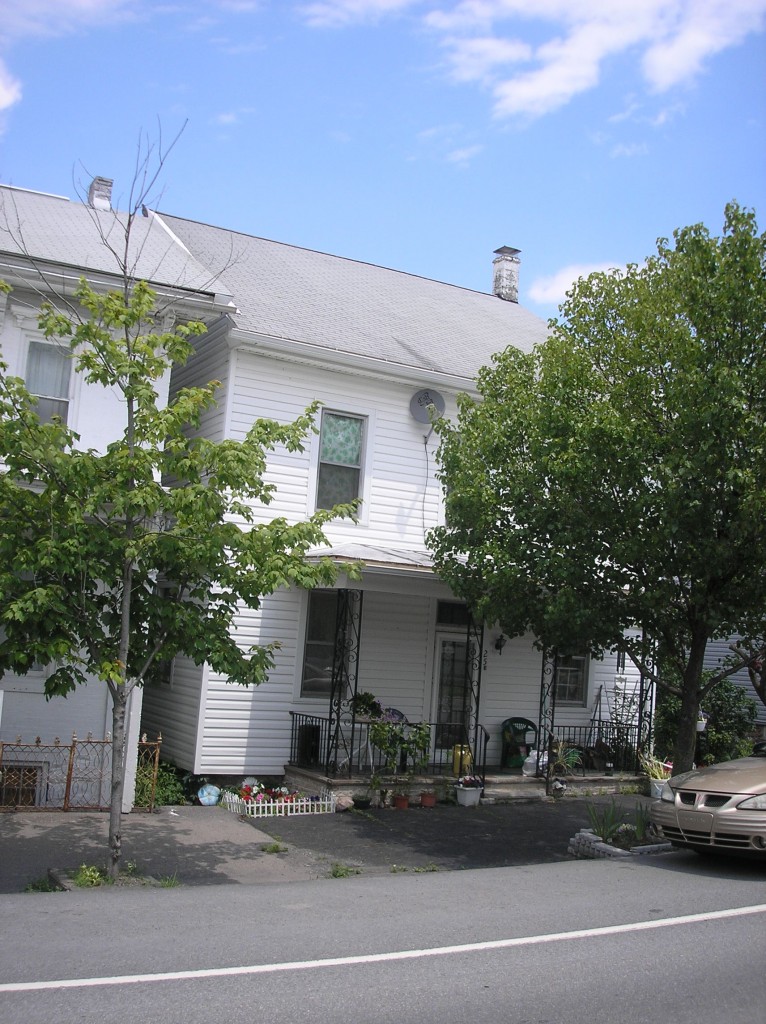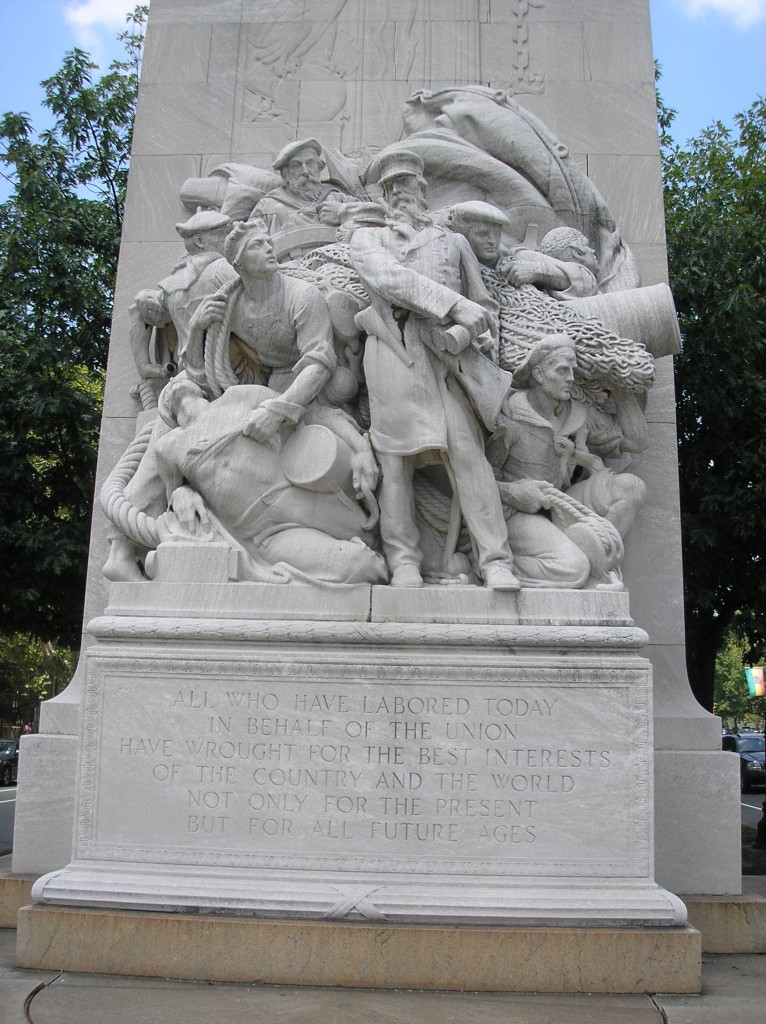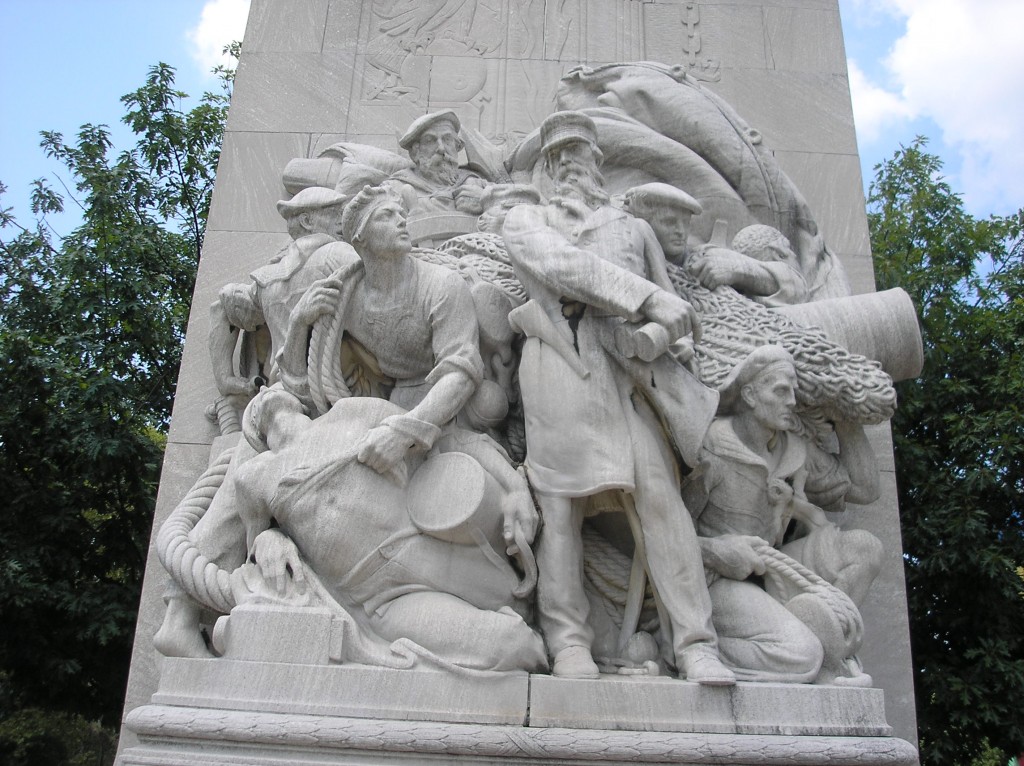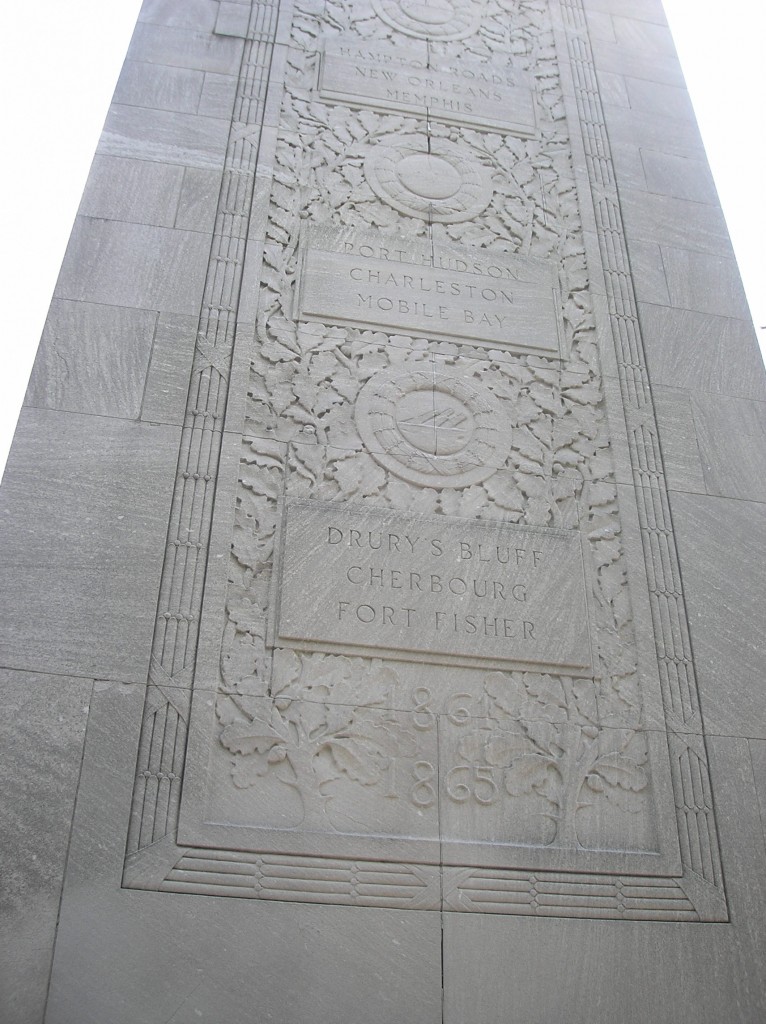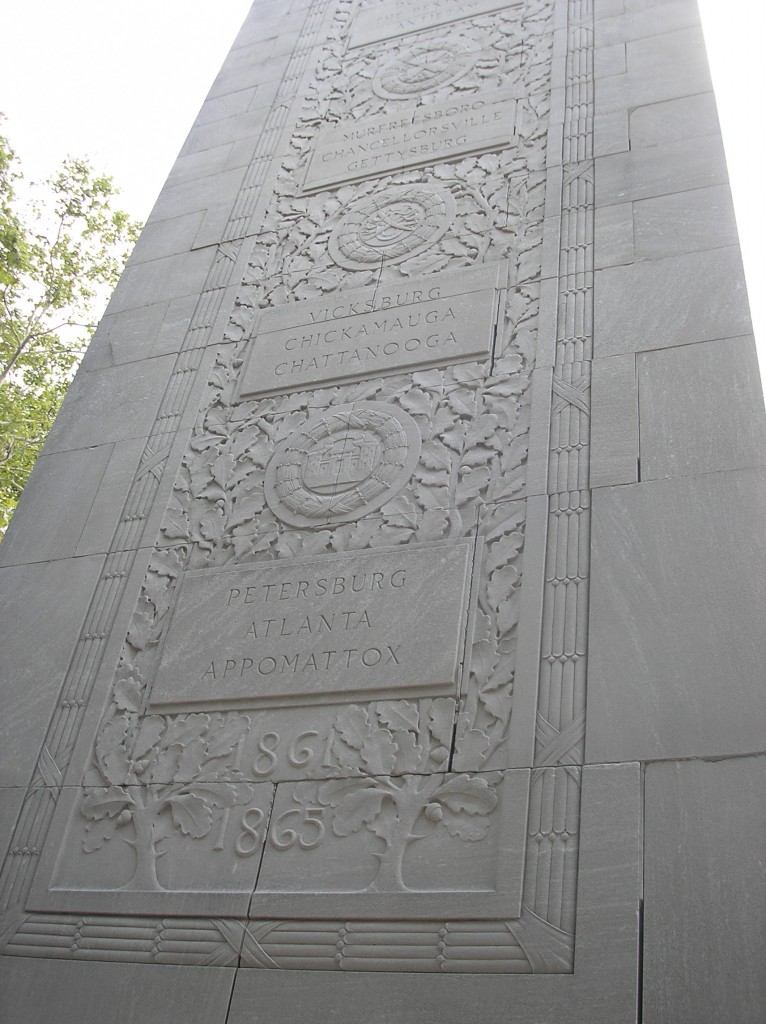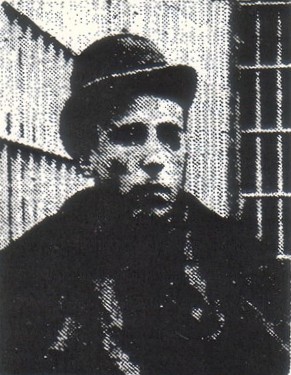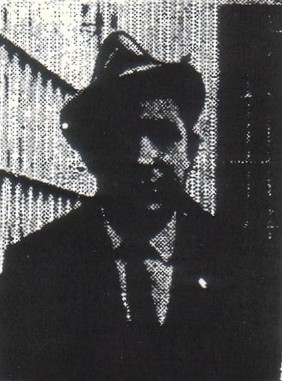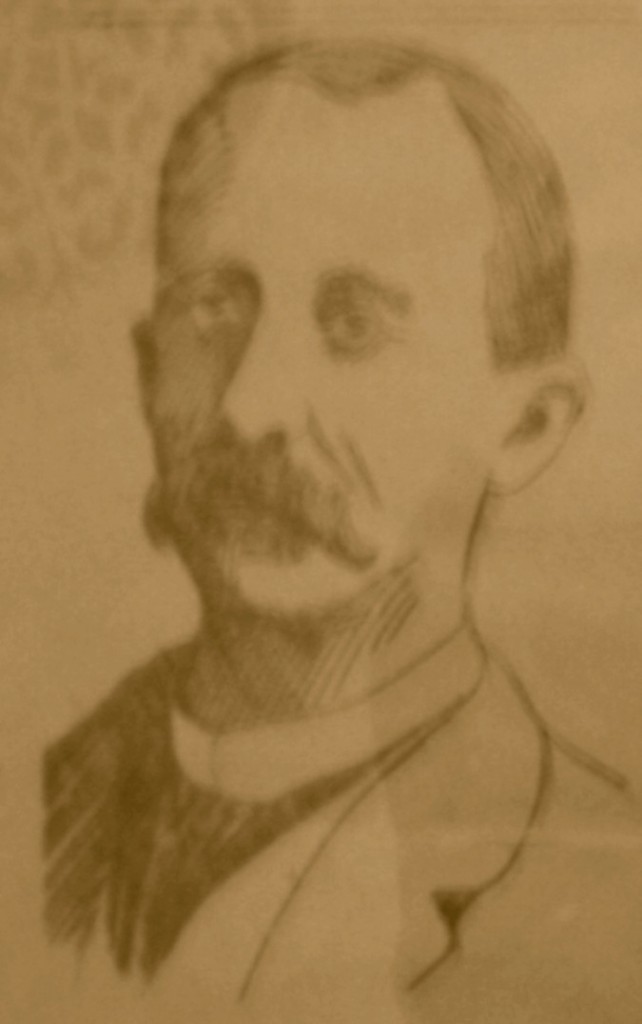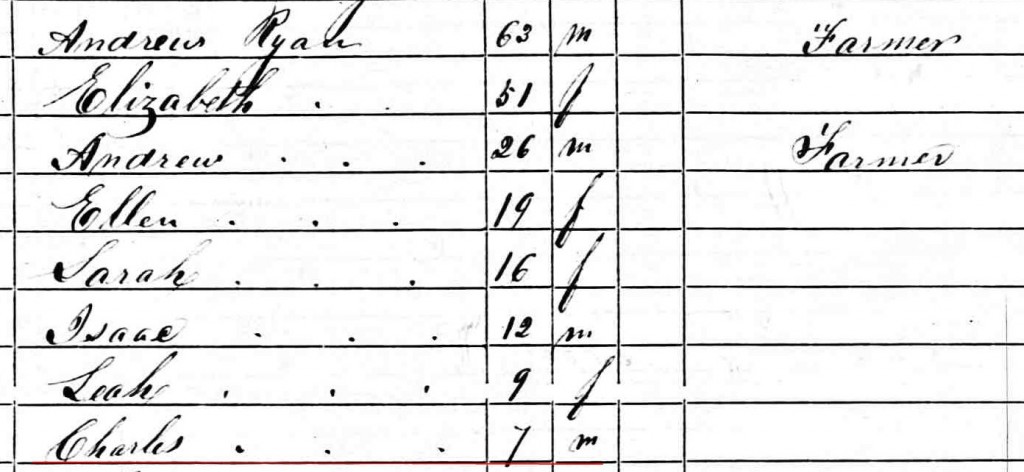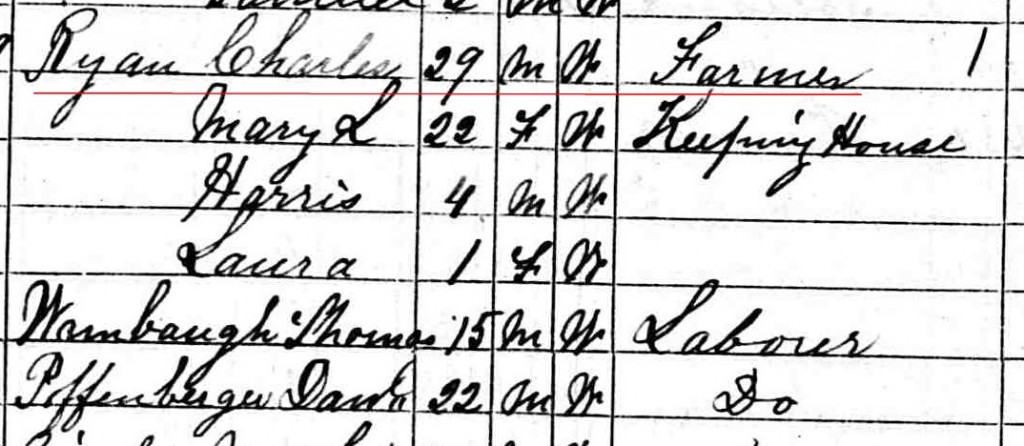Union League House, Philadelphia – Interior
Posted By Norman Gasbarro on November 13, 2011
Last Sunday, the first part of the story of the Union League of Philadelphia was presented. Today, the final part is given. Future posts will present other patriotic organizations that were organized or grew in the days before, during and after the Civil War.
In 1865, the new Union League House in Philadelphia was opened for inspection by the public and press. The current web site description of the interior modestly states the “the traditional decor is accented in rich leather, patinated wood and polished marble.” The Philadelphia Inquirer lavishly reported on what it saw at the open house. After climbing the marble stairs of the grand entrance and proceeding into the hall, the visitor is first greeted by the bulletin board:
To guard against the intrusion of any disloyal person, the following notice was posted yesterday on this board: –
EXTRACT FROM THE BY-LAYS.
“No disloyal person shall be admitted into the League House and if any such person be knowingly introduced by a member of the League, such member shall be reported for the offense to the Board of Directors.” (signed) GEORGE H. BOKER, Secretary.
A board containing the time of the committee meetings of the League is also to be found in the hall. Descending from this hall to the basement we enter
THE BILLIARD ROOM.
This room contains four large billiard tables, manufactured from walnut, twelve large size lounges and pictures of a United States ironclad, United States Steam frigate Roanoke, United States gunboat Eutaw, United States steamers Weehawken and Iroquois, United States steam ram Decatur, United States harbor and Union monitor Manhattan, United States ironclad Onandaga.
The oyster box is the room adjoining the billiard room. It is suitably furnished having a fine marble slab on the top of the stand, and engravings on the walls. In the rear of this will be found the kitchen, which is furnished with all the modern improvements. on the same floor is the private room of the Steward, which is carpeted and furnished in a becoming manner. During yesterday the cooking apparatus was kept in full working order, and was found to answer the ends for which it was designed, in an admirable manner.
SMOKING SALOON
On ascending to the first floor we enter the smoking room, the walls of which are frescoed, the carpet is Brussels and of a beautiful pattern, the curtains are of white linen and of white lace. Three fine tables are also placed in this room, and chairs of beautiful and substantial workmanship. In the north corner of the room are two pedestals, surmounted with eagles. The wall is hung with pictures of the late President Abraham Lincoln, General Grant, Vice Admiral D. G. Farragut, Captain Winslow, John Burns, the hero of Gettysburg, General Couch, Hon. John Bright and the View of the Ruins of Chambersburg. The marble mantle contains two fine figures, a huntsman and a female holding in her hand a spring of fish, and a net over her right shoulder.
THE PARLOR.
This room is furnished in fine style. The window frames are surmounted with beautiful executed cornices, from which are suspended white lace curtains. A fine piano and chairs covered with velvet are paced around the room. There are four lounges and a large circular table, upon which is placed an album, containing likenesses of the Generals and other officers of note who have taken a conspicuous part in the late war. On the east side of the room will be seen two pedestals containing the busts of Daniel Webster and Henry Clay. Immediately over these is suspended an original painting, representing the reading of the Declaration of Independence in front of the old State House. The figures in the painting are well executed. The frame surrounding the picture has been finished in a workmanlike manner.
THE RECEPTION ROOM.
This room adjoins the parlor, and is covered with Brussels carpet. The windows are hung with white linen and lace curtains with heavy wine-colored covering. A book for the registry of the names of visitors is kept in this room.
THE DIRECTORS’ ROOM.
This room is furnished in a beautiful manner the windows being hung with lace and velvet curtains. The centre table is of a circular form. Two sideboards, with marble slabs, are placed on one side of the room. The mantle contains the figure of a female, which is in keeping with the other decorations. On one of the sideboards is to be seen a massive silver pitcher, with the inscription – “Presented to the Grand Union League of Philadelphia, by the Ladies’ Loyal Circle of Pennsylvania, April 9th, 1864.”
THE PUBLIC DINING ROOM.
This room is also furnished in splendid style. A fine Brussels carpet is placed on the floor. A beautiful oblong mirror is on the south wall, resting on a well-finished centre table. There are fourteen dining tables in this room upon which are placed silver knives and forks, with all the other articled necessary to adorn the dining table. The side-board contains a fine silver urn.
THE WASH ROOM.
In this room will be found all the requisite accommodations. It is commodious and well adapted for the purposes for which it is intended.
THE READING ROOM.
This room contains two large circular tables, upon which are placed all the loyal daily papers of the city, prominent of which is THE PHILADELPHIA INQUIRER.
The likenesses of the late President of the United States, General Grant, Meade, Farragut, Seward, Hooker, Doubleday, Burnside, Banks, Webb, Hancock, Warren, and others, adorn the walls; also a well-executed portrait of general Scott.
THE LIBRARY ROOM.
Adjoining the reading room, has a number of book-cases containing some of the best works of the day. This apartment is not furnished as it will be in a few days; when completed the library will contain a large collection of books not usually found on the tables or shelves of our libraries.
THE BANQUET ROOM.
This room is furnished in splendid style. The carpet is of blue velvet. It contains a long table, reaching nearly the entire length of the room. The table is furnished with beautiful finished china ware, wine glasses, silver ware, and other articles necessary to a place of this description. The furniture if manufactured of walnut. This room will be used for the entertainment of the distinguished guests.
There was no demonstration further than the raising of the American flag, which took place at noon. This was done out of respect to the memory of the late President of the United States.
The above article was from the Philadelphia Inquirer of 12 May 1865 and is available through the on-line resources of the Free Library of Philadelphia. It is a continuation of the article “”Opening of the Union League House,” which was presented in this blog last Sunday along with a description of the the exterior of the Union League House.
Last Sunday, the first part of the story of the Union League of Philadelphia was presented. Today, the final part is given. Future posts will present other patriotic organizations that were organized or grew in the days before, during and after the Civil War, particularly those that took root and had an impact in the Lykens Valley area.
 ;
;

